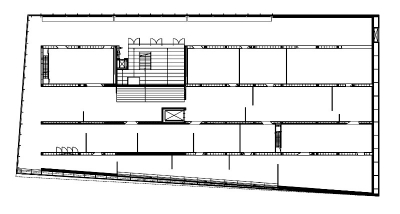Het Valkhof Museum
Supermarket, temple and meeting place:
Programmatically, the contemporary museum is a hybrid space. Technically and structurally, the museum is no less heterogeneous. As a fusion of routing, installations, blank walls, construction, rooms both dark and light, this museum project takes as its departure point the effective achievement of all-including structures to make these components gel.
Two main structures organise the museum, one being the staircase, which starts on the square in front of the museum and continues to the balcony zone on the upper level and the other is the ceiling, which follows the same route. Both elements serve several functions at once. The staircase forms the structural core of the building and is also a distributor in that its branches shoot off to the various programme parts, such as the cafe, library, museum and central hall. The ceiling, meanwhile, incorporates all the installations and lends coherence to the museum, which in its turn houses a great variety of miscellaneous objects and art works.
The public, administrative and storage functions are housed on the ground floor, while the museum and exhibition spaces occupy the first floor. Divided lengthways into parallel streets with multiple lateral openings, the structure of the museum floor hybridises the severely regulated with the informal. Attracted by light or by cross-views through the streets, visitors may follow their own individual routes. In this way, the equal-potential structure of the floor plan is challenged and deformed by more fluid and dynamic movement patterns - generating a new structure.
Like a blanket casually thrown over an object, the ceiling covers, but does not conceal or disguise the multitude of installations for lighting and climate control, the multitude of wires, fixings and fittings, sprinklers and alarms. The undulating ceiling has a wave-like structure, which varies according to the expected movement of visitors. In spaces where most people converge, the waves in the ceiling are more frequent, while they are less frequent and shallower in spaces where less climate-controlling machinery needs to be housed. The ceiling slats are all removable for easy access and machinery maintenance.

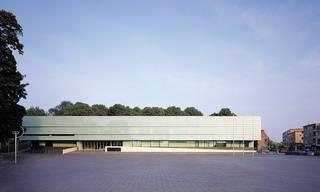
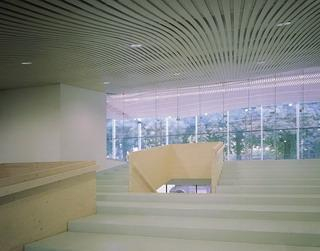
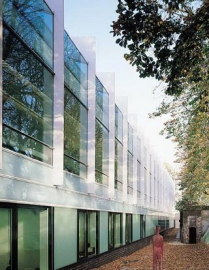
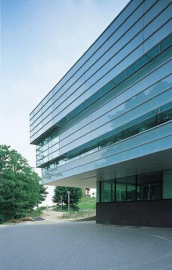
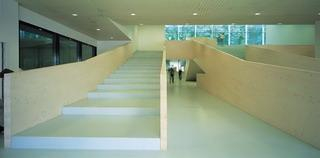
.JPG)
.JPG)
